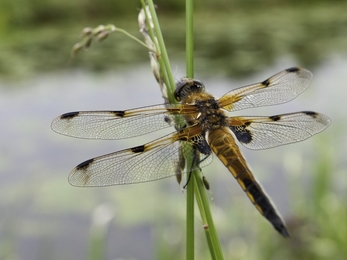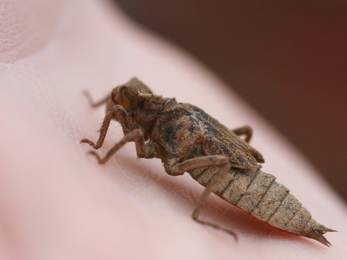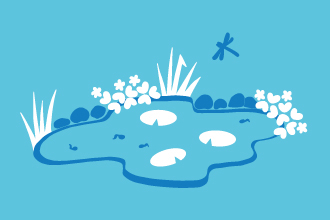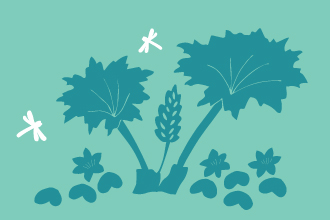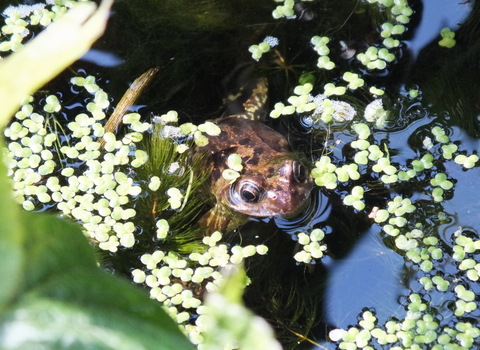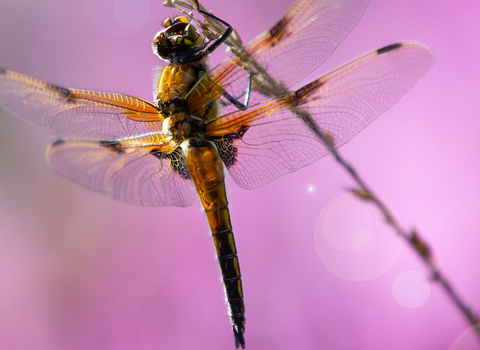Many insects have a rather complicated lifestyle, starting off as aquatic creatures and doing most of their growing and feeding in freshwater, before being ‘reborn’ as flying insects.
Dragonflies and damselflies are probably the most spectacular of these. We have 22 species of dragonfly in Shropshire, a spectacular addition to our summer wildlife with their fast manoeuvrable flying and bright colours, and all needing freshwater to breed. Their ugly offspring are ferocious predators of the underwater world.


